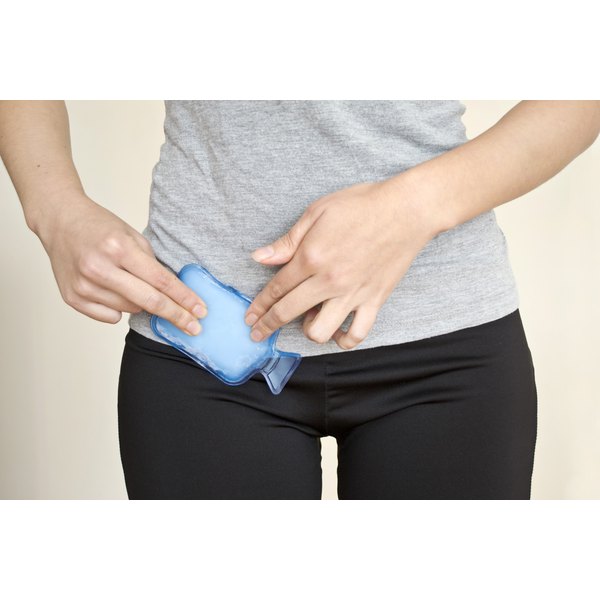
Hip flexor injury is caused by acute trauma, poor strength and flexibility, or sometimes weak muscles in the lower abdomen, which minimizes stability of the pelvis. It can be treated at home with some basic treatment methods, followed by some simple rehabilitation stretches and exercises to help restore mobility and return to regular athletic activity.
Ice
First, ice is needed to relieve pain and reduce swelling of the hip flexor muscle. Ice should be applied in 20-minute intervals, every three to four hours for the first two or three days after the injury. This should help relieve the pain and any swelling that has occurred. During this time, place a pillow between your legs during sleep to relieve any pressure on the injured hip.
Medication
After the initial pain has subsided, anti-inflammatory medication such as ibuprofen may be taken to keep inflammation and pain out of the hip muscle, allowing you to move on to rehabilitation, stretching, and exercises. Take medication only as needed, following dosage instructions provided on the package.
Rehabilitation
Flexibility and strength are crucial to returning to normal activity after a hip flexor injury, and rehabilitation exercises focus on these key physical aspects. Physical therapy will provide the best overall recovery rate from serious hip injuries, but recovering from minor injury and overuse takes some simple stretches. Remember to stretch twice daily, even on days you are not working out. Stretch both the injured and uninjured legs to be sure flexibility is maintained all over.
Hip Flexor Stretch
First, try the hip flexor stretch to enhance flexibility. Kneel with the injured leg forward while you flatten your lower back and lean your hips forward. Continue to lean forward slowly until you feel a stretch at the front of your hip. Hold this for 10 to 20 seconds and repeat on the other side.
Quadriceps Stretch
For further flexibility, proceed with the quadriceps stretch. Face a wall and brace yourself with the arm on the side of your uninjured leg. Pull the foot of the injured leg toward your buttocks, keeping your back straight and knees together. Hold that stretch for 10 to 20 seconds, and you should feel the inside of the hip begin to stretch as well as the quadriceps. Repeat on the other side.
Heel Slide
Transition from flexibility to strength with the heel slide. Begin the heel slide by sitting with your legs out, toes pointed up. Slide the heel of the injured leg toward your buttock and pull your knee to your chest. Perform three sets of 10 and then switch to the other side.
Straight Leg Raise
Finally, do the straight leg raise to help increase hip strength. Lie on your back with your legs in front of you. Bend the uninjured leg, and raise the injured leg about eight inches off the floor while flexing the thigh muscle. Hold each repetition for about five seconds. Perform three sets of 10 and switch to the other side.
Original article and pictures take healthfully.com site
Комментариев нет:
Отправить комментарий